A perfect opportunity missed at the mountain
‘The perfect shot’ is something that every photographer craves. See, photographers are generally basket cases — psychotics who continually pursue a level of artistic adequacy that they'll never actually reach.
That's why good photographers have a tendency to be quite dark and depressing people; their search for happiness is never going to be truly quenched.
Am I a good photographer? I like to think I'm alright in isolation. But, within the confines of the Bathurst 1000 media room I feel like a right peanut. But on this day, October 7 2016, the opportunity for me to take the perfect photo arose from the most unlikely of places.
And I squandered it hopelessly like a moron.
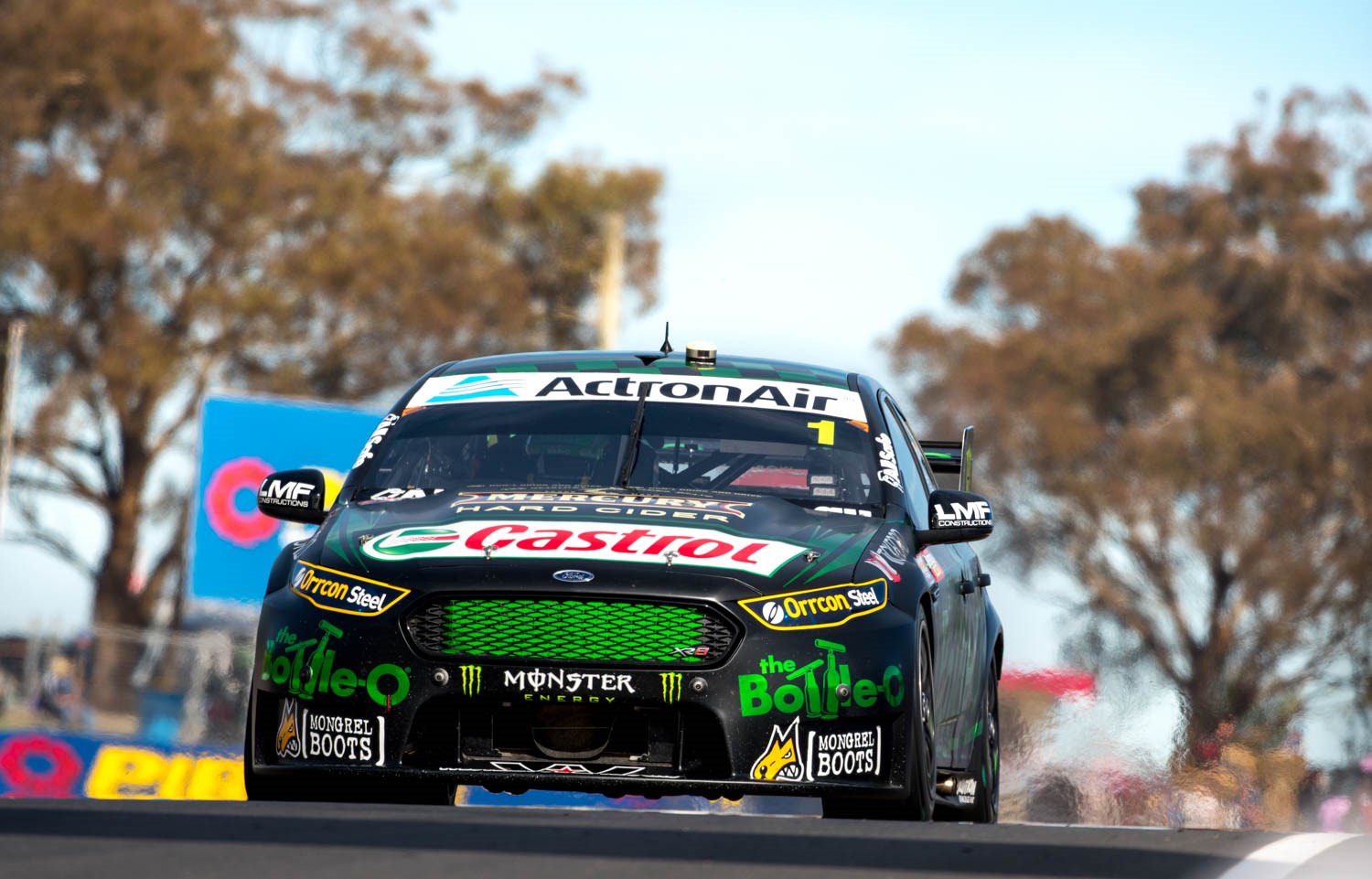
The day started at the top of the mountain. Normally the trek to the top is taken via a series of buses that do a loop outside the circuit to a drop-off point near Reid Park. But, media get their own special little bus.
It's driven by a gentleman named Pete, who's been doing this stuff forever. 15 minutes before the end of every session, Pete takes on a load of media personnel then drives them to designated photographer points dotted around the circuit.
This typically involves Pete driving onto the circuit between sessions — taking the performance measures of his humble Toyota Coaster bus to what are typically unchartered heights. He clips kerbs and rows through the gears with the precision and confidence of someone who's done this thousands of times.
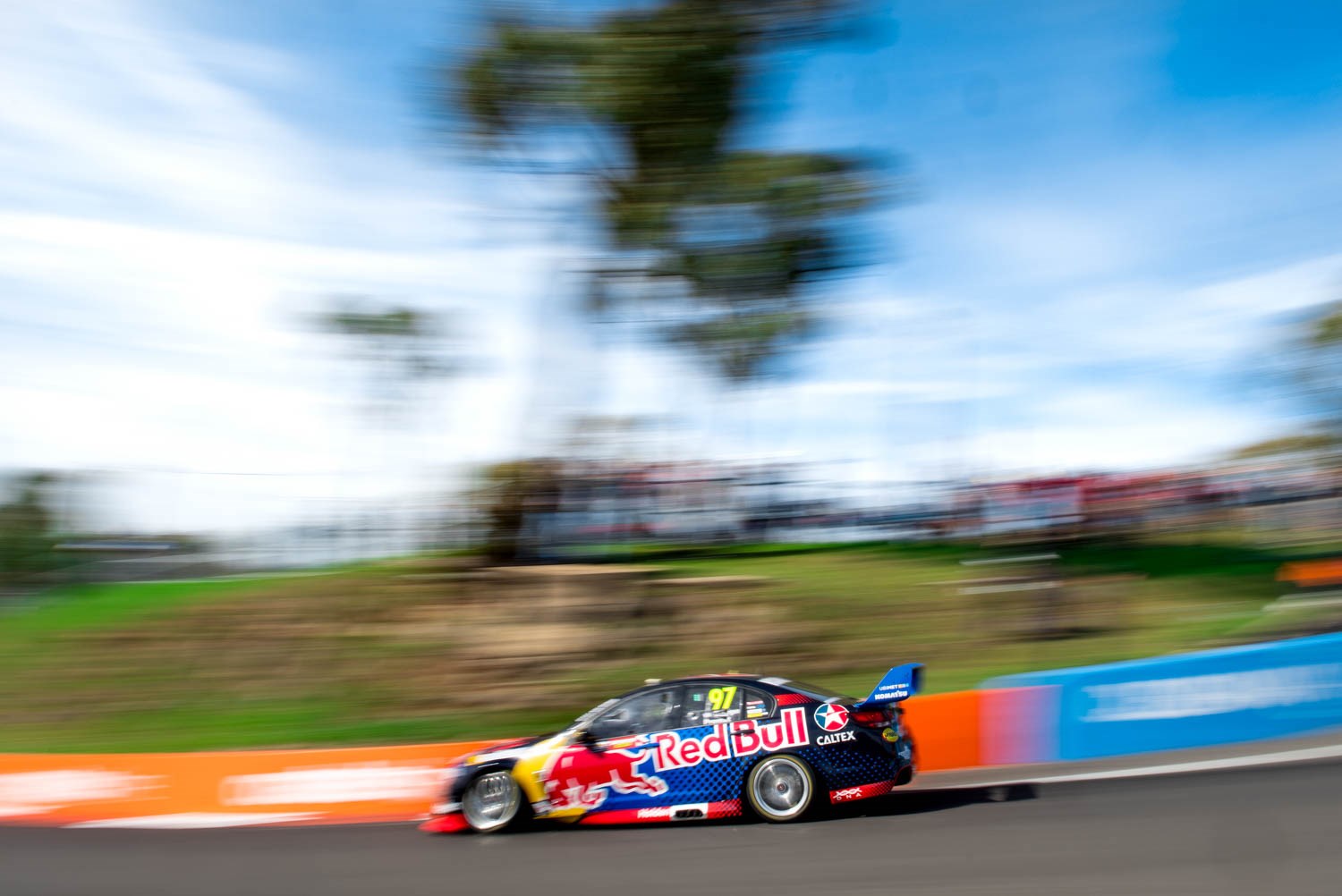
The majority of us, including me, elect to hop off at Skyline at the top of the mountain. This is the most exhilarating place on the map to shoot, as the cars and their masters take on incredible amounts of kerb and attitude. It's the segment of Mt Panorama that requires the most trust and faith on the part of the driver in their own skills, as well as in the skills of the engineers and mechanics that pieced together their race car.
As such, there's always a bunch of photographers there, hoping to catch shots of drivers vaulting up onto two wheels or locking a wheel.
Do they also hope to see a crash? No — nobody hopes for crashes. Many of these shooters have close friends behind the wheel or at least understand the sacrifice that goes into most cars on the grid.
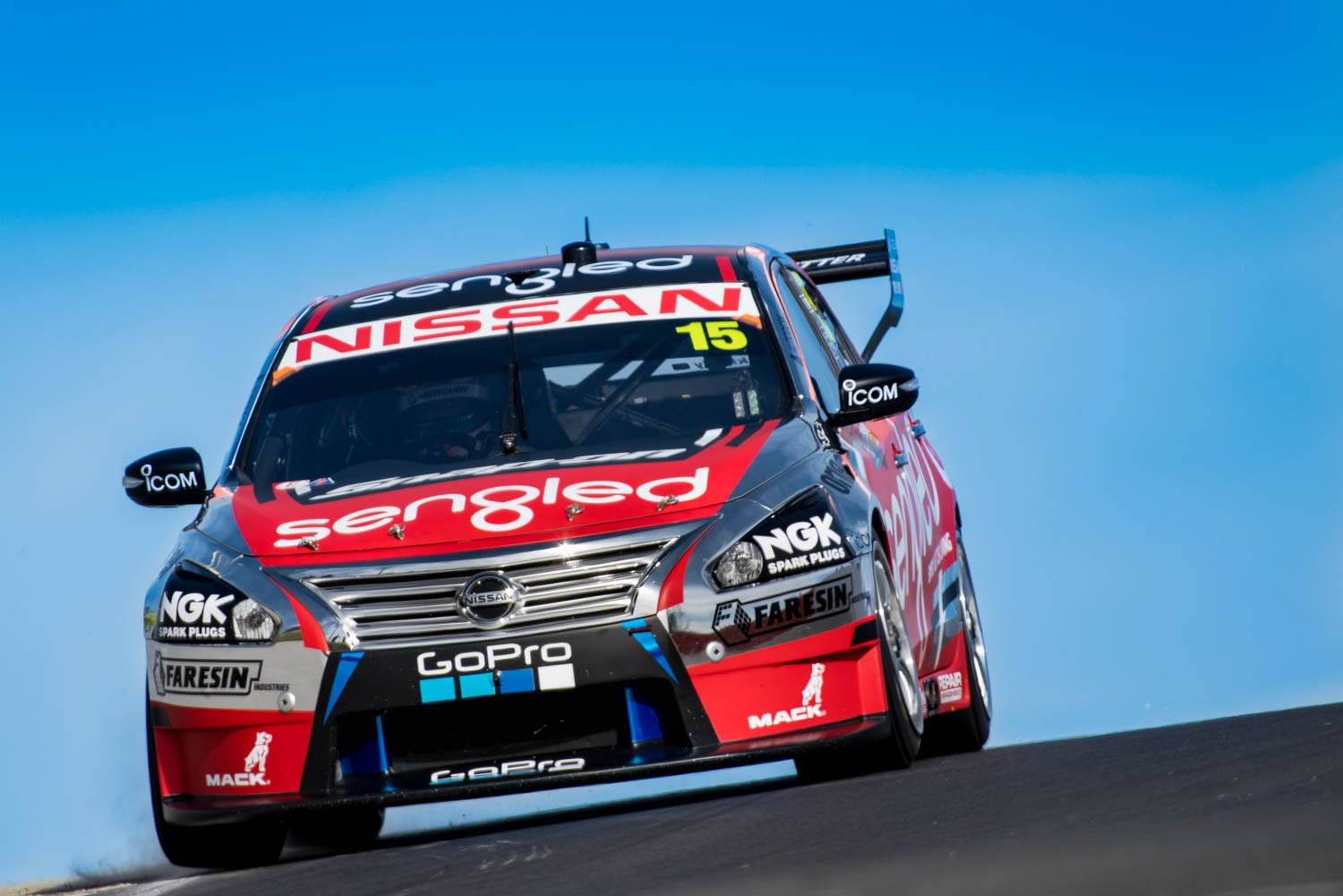
But if a crash happens, you can bet your biscuit that we'll all crowd around each other to ask who got it, then compare who did it best. Shooting crashes is the photographer's grand appendage-measuring contest — who's is sharpest, who's is closest, who's is going to adorn the cover of tomorrow's newspaper.
I rarely manage to get crashes on camera. That's largely because I'm a wimp, and a firm believer in the latter half of the fight or flight method when danger is abound. However, just a few sessions into the day a crash was going to unfold right in front of me.
I usually pay little attention to the support classes at the mountain. That's largely a choice based around efficiency, because it means I can focus much more of my time on covering the main event to the best of my abilities.
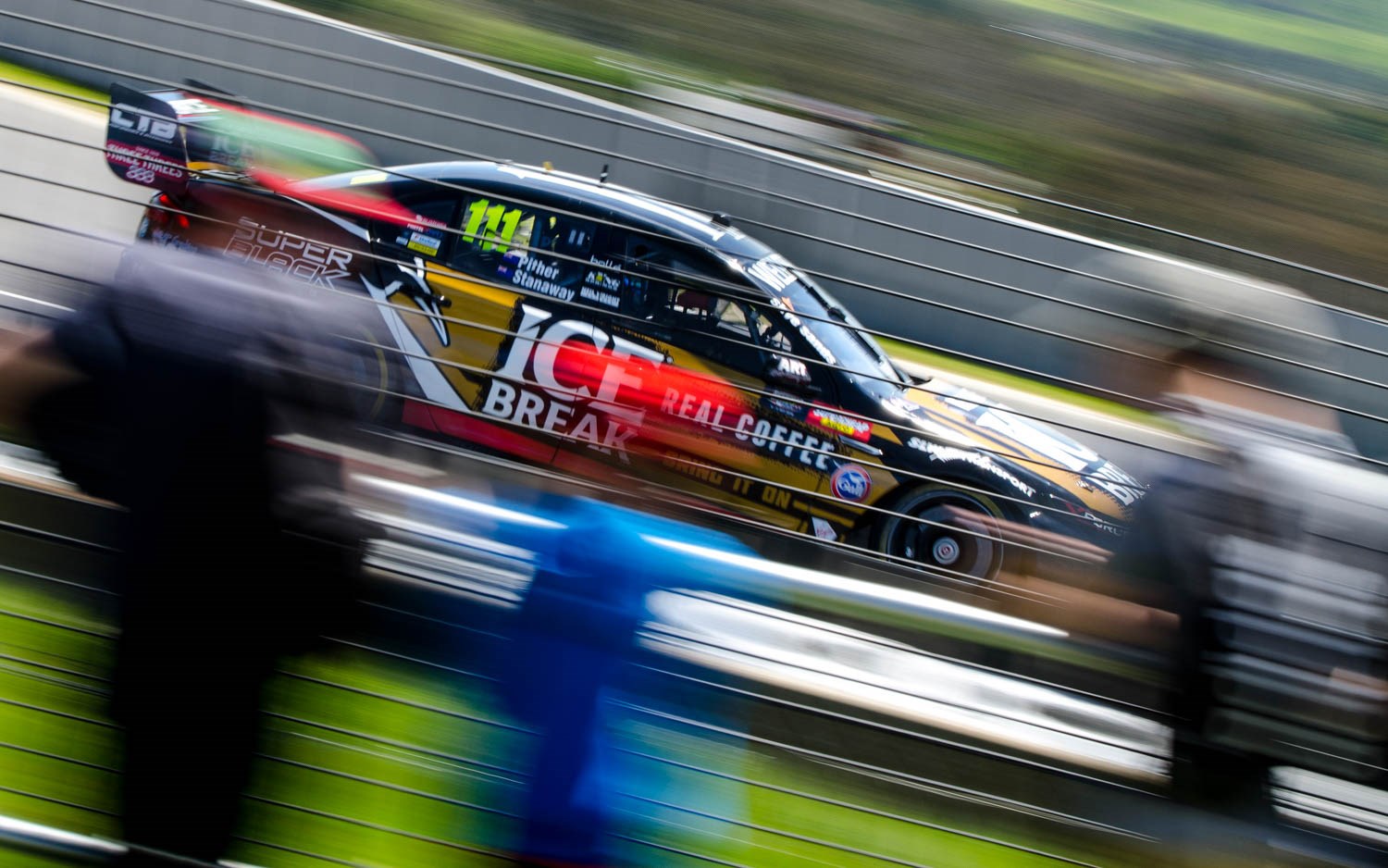
But I can't help but show more interest in the likes of the Development Series and the Porsche Carrera Cup, having been able to finally follow their exploits in full on Sky this year at home. From Matt Campbell's violent rise to Stuttgart stardom to Todd Hazelwood's devastating absence of luck while in search of a first V8 win. Heaven is a full day's broadcasting, some chip and dip, and a couch of at least moderate comfort.
So it's with this intrigue that I shoot the Carrera Cup class from the outside of the circuit as they emerge over Skyline and wiggle through the esses to the ever treacherous dipper.
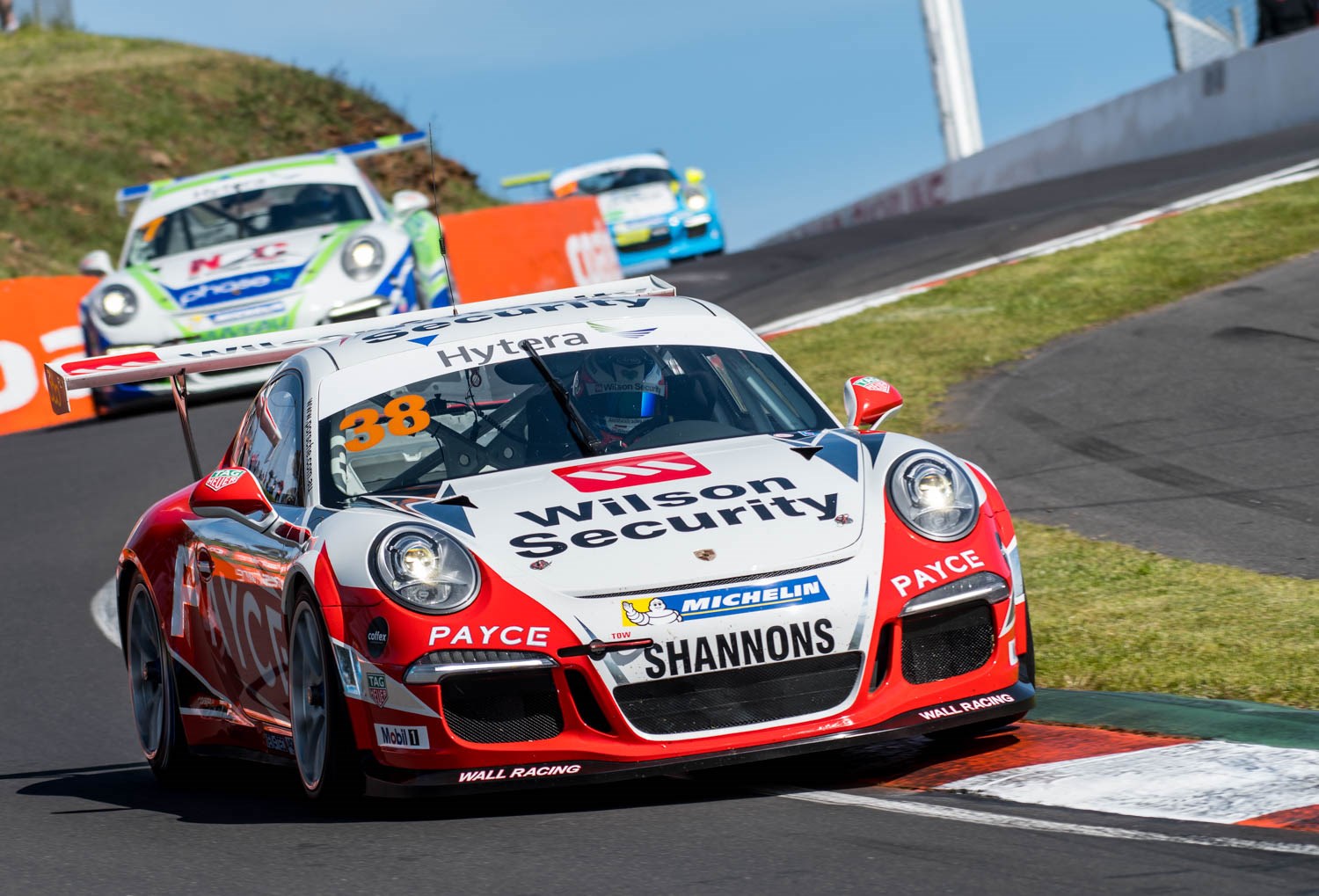
The class is made up of ‘Pro’ and ‘Elite’ drivers; pros being pros, elites being what most would call ‘gentleman racers’. It's an enjoyable class to watch, but for whatever reason it doesn't enjoy much in the way of fanfare from Aussie audiences. Not that that's a huge worry; Porsche get their slice of exposure, the drivers get a great class to hone their skills, and the fans get a toilet break.
As the German bullets rocket down the hill, it's clear that some are struggling. The relatively hard suspension of the Porsche doesn't take well to cutting kerbs, and yet the quickest way to get down the hill is to hit the kerb on the inside of the first ‘ess’.
Some drivers fair better than others; the pro guys largely taking the added attitude of the car in their stride. But others keep coming unstuck — thenTony Longhurst arrives.
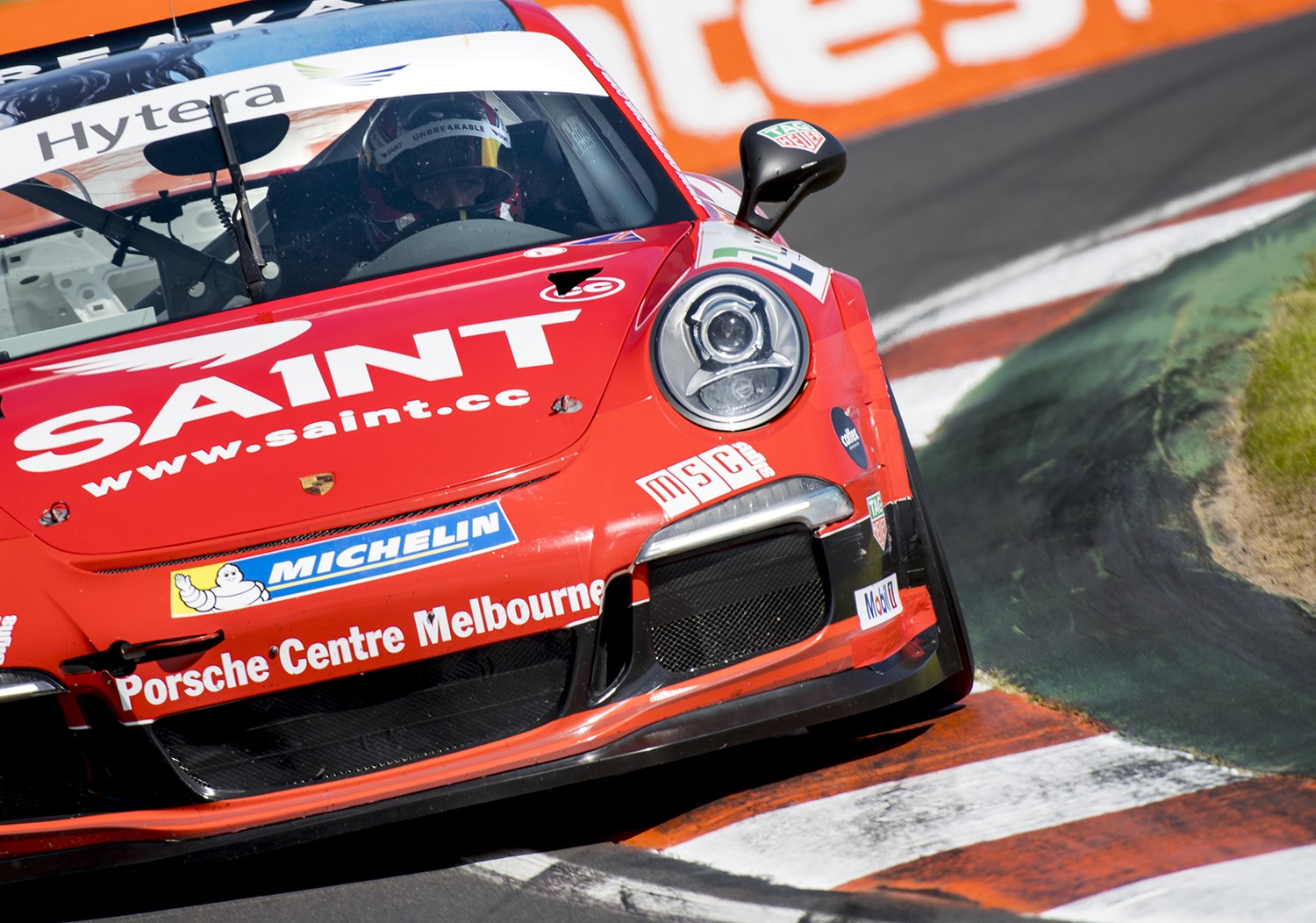
Tony knows how to peddle a race car. He's won the Bathurst 1000 twice, and is fresh from winning a historic event in England. But despite his wealth of experience, this weekend was to be his Carrera Cup debut.
I knew it was going to be a huge crash as soon as the car landed awkwardly. Tony had missed the kerb entirely and taken to the grass apron behind it, kicking the tail of the car out as he tried to correct himself.
The piercing sound of locked tyres on Tarmac rang through the air, prompting alert from every photographer within a 500m radius — meerkats popping out of their holes.
As soon as his car began to slide, I picked up my leading Nikon kit — a 200-500mm lens mounted to a D500 crop body capable of spitting out 10 frames per second. I point it roughly towards the crash, prayed just a little bit, and held down my right-hand index finger.
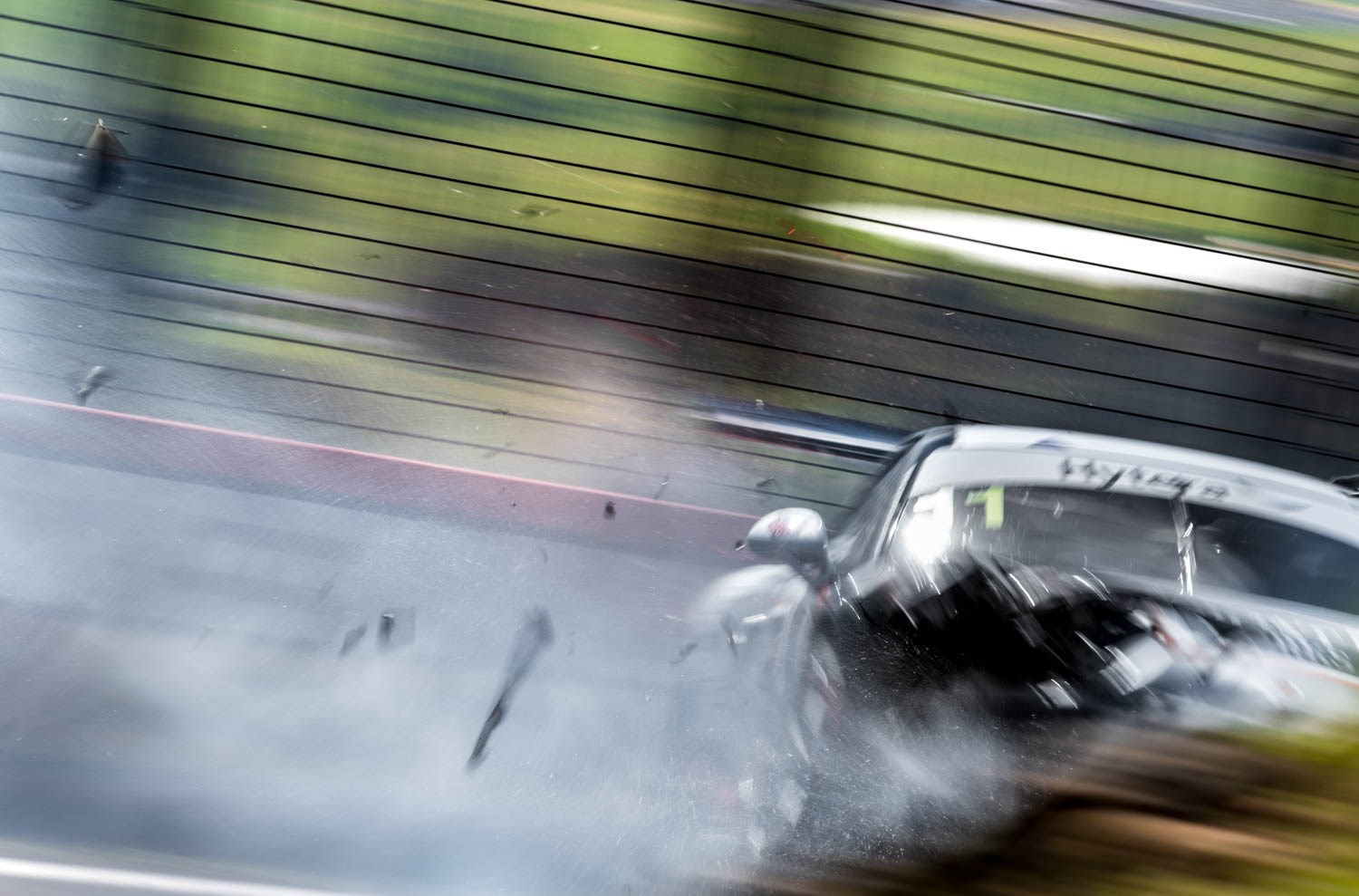
The thing about this ‘perfect shot’ that photographers crave, is that the biggest factor behind it isn't your standard of kit or the extent of your training. It's luck. Pure luck. And about two minutes prior to the crash, I'd altered my settings. So, instead of getting a clean and crisp photo of a Porsche suspended in mid-air, spewing fluids and carbon and mess all over the track — I got this.
It's not the perfect shot, but in a way it's one of the best I've ever taken. The car and the location is almost entirely indiscernible, but there is an abstract drama to it all. While the guy on the street wouldn't give it two straight looks, it didn't take long for the shot to attract a minor crowd in the media room as various other shooters gathered around to offer their critique.
I actually like it.
That's kinda cool.
Did ... you get any others?
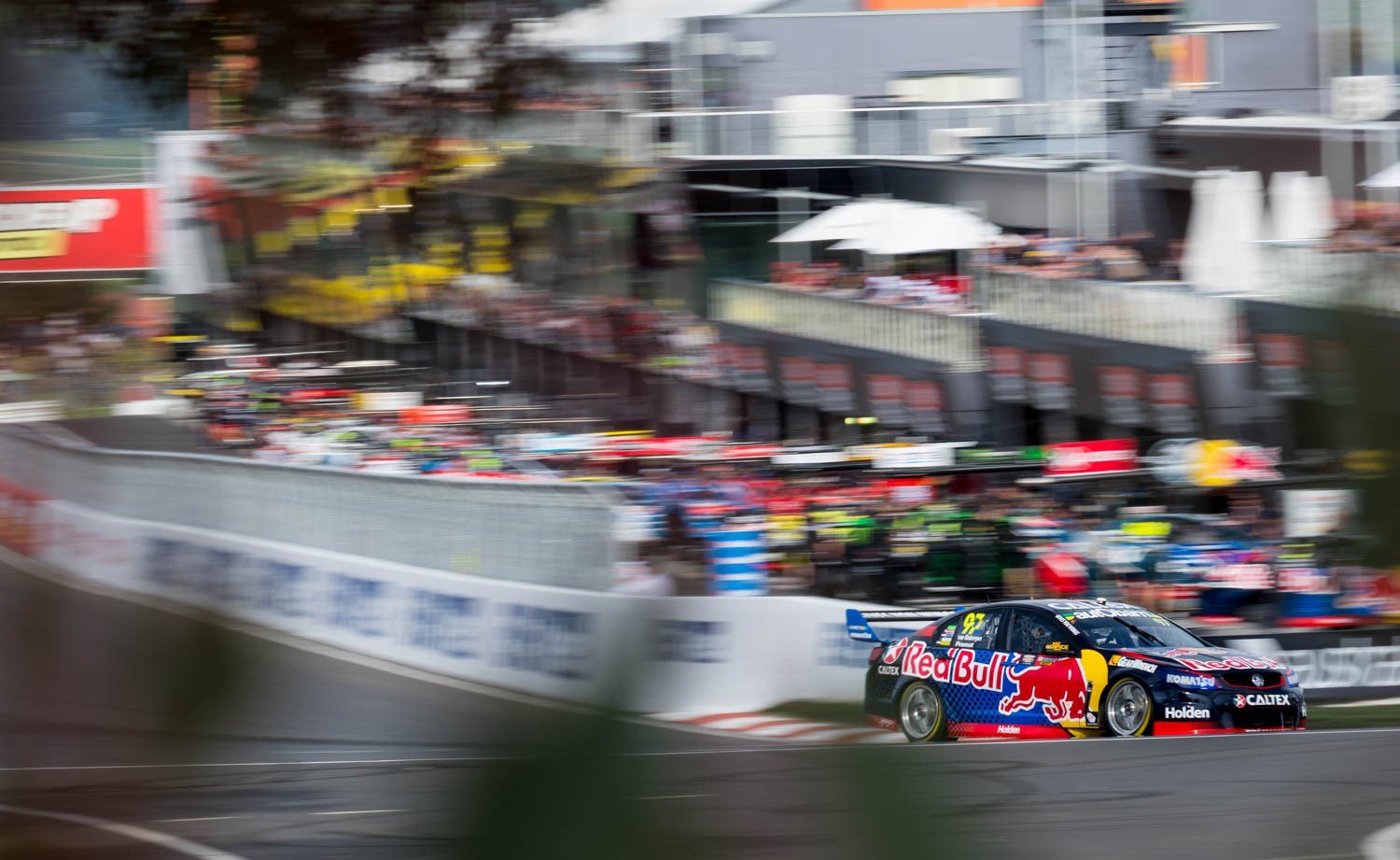
And lastly that's the other thing about the perfect shot. No matter how good you think it is, how perfect the balance of colours is or how the subject is positioned in the frame — there will always be someone who thinks it's utter crap.
Driven's Matthew Hansen is blogging every day about the highs and lows of reporting on the Bathurst 1000. Follow the links below to read parts one through three.




